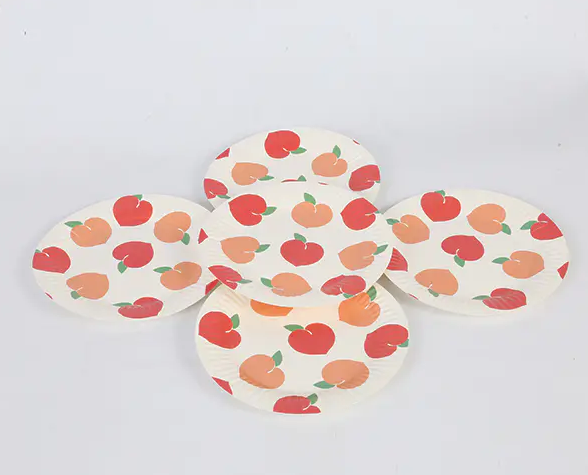The performance of disposable paper plates after serving food is an important consideration for both casual users and food service providers. A common concern is whether these plates tend to become soft, soggy, or deformed once they come into contact with hot, moist, or greasy foods. While disposable paper plates are designed for convenience, their durability under actual usage conditions varies depending on the materials used and the types of foods served.
In general, high-quality disposable paper plates are manufactured with additional coatings or multiple layers to resist moisture and maintain their structural integrity during use. These may include food-safe polyethylene, PLA-based bioplastics, or wax coatings that help the plate repel liquids and oils. Plates treated with these barriers tend to hold up well when serving moist foods like pasta with sauce, grilled meats, or fruit salads, and do not soften significantly under normal meal durations.
However, not all disposable plates are created equal. Lower-grade or economy versions may lack any significant coating or may be made from thinner paperboard, making them more prone to absorbing moisture. When these are used to serve hot or greasy items, they can start to weaken within minutes, becoming limp or sagging at the edges. This deformation can make it difficult to handle the plate and may lead to spills or the need for double-stacking plates to provide sufficient support.
Temperature also plays a key role in how a plate performs. Hot food items, especially those with high oil or water content, accelerate the breakdown of untreated or poorly coated paper plates. When exposed to steam or high surface temperatures, the fibers in the plate may begin to soften or lose their rigidity. This effect is more pronounced if the plate is used for reheating food in a microwave, a scenario for which many disposable paper plates are not optimized unless specifically labeled as microwave-safe.
The environment in which the plate is used can further affect its resistance to deformation. Humid conditions, outdoor picnics, or long meal durations can increase the chances of the plate absorbing ambient moisture and becoming soft, especially when coupled with food residue. For this reason, many manufacturers design their premium lines of disposable paper plates with reinforced edges and thicker cores to provide greater reliability even in demanding use cases.
Sustainability also influences plate performance. Some environmentally friendly options made with biodegradable materials or recycled fibers may have slightly different moisture tolerance compared to conventionally coated paper plates. Manufacturers in this category strive to balance compostability with practical strength, and many have succeeded in creating eco-conscious products that remain durable through the course of a meal.
In conclusion, disposable paper plates can retain their shape and firmness after use if they are well-designed and made with proper coatings or reinforced structures. The risk of becoming soft or deformed depends largely on the quality of the plate, the type of food served, and the conditions of use. Choosing the right type of plate for the intended application—especially when hot, greasy, or moist foods are involved—is key to ensuring both convenience and functionality.
Type: Disposable Paper Plates
Cup mouth: 18 cm
Material: PE coating
Product word: Disposable paper plate
Transport package: 100pcs/bag, 1000pcs/carton
Application: field, home, hotel, workplace, restaurant
Highlight the selling point 1. High-quality virgin pulp and film-coated base paper material; 2. Simple design, fresh and natural beauty; 3. Made of pure virgin fiber pulp, no fluorescent treatment, green, healthy, and environmentally friendly; 3. Food-grade degradable coating, it is waterproof and oil-proof, and the embossed design of the disc is non-slip and wear-resistant.
